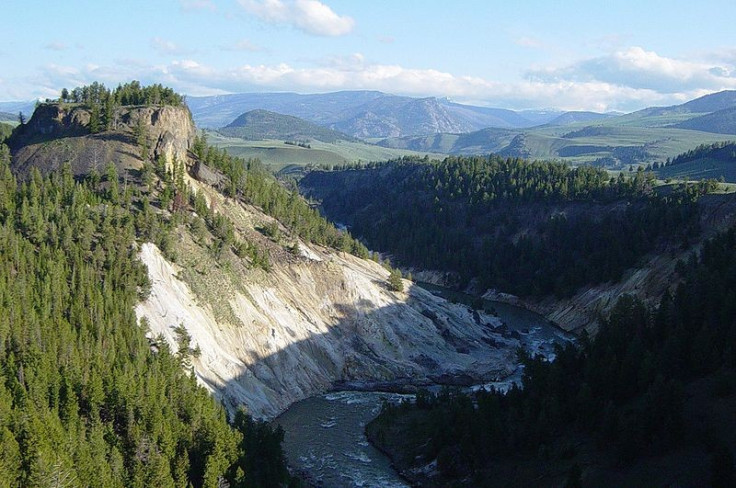RIP Yellowstone? Supervolcano on its Molten Deathbead, Scientists Suggest

The supervolcano beneath Yellowstone National Park in the US could by lying on its molten deathbed, scientists have said.
According to Ken Sims, from the University of Wyoming, the air and water samples taken from the world's largest volcano suggest it could be dying.
The team looked at the acidity in water samples and radon in the air. They also analysed how water and gas mix as they rise from the ground in a bid to improve methods of predicting eruptions.
They found that rather than erupting, Yellowstone may instead be dying, the Star Tribune reports.
Volcanoes exist in one of three states: active, dormant and extinct. At present, Yellowstone is dormant, having not erupted for 70,000 years. If it becomes an extinct volcano, it will never erupt again.
Many researchers have hypothesised what would happen if Yellowstone was to erupt now, with scientists predicting it would send 2,000 more debris into the air than Mount Saint Helens did when it blew in 1980.
However, researchers also recently discovered the supervolcano is 2.5 times larger than previously thought, meaning an eruption could spell catastrophe beyond what is expected.

The Wyoming team looked at the snowy ground near Mammoth Hot Springs, where pools are filled with crystal clear water: "I have gotten radium out of that," Sims said. He explained that appearances are not always what they seem to be when it comes to gas and water interaction: "It looks like it's boiling. But it is actually from steam or CO2."
By examining the interaction, Sim and his team were looking to find a way to better predict steam eruptions, which would in turn suggest if a volcano was becoming more volatile.
However, the experts note this is not proof of Yellowstone's impending death.
Jacob Lowenstern, scientist in charge of the Yellowstone Volcano Observatory, said: "Geology in general is a hard thing to observe. It's like watching a rock decompose. In a place like Yellowstone, there are a lot of things that are sped up. That's the truly amazing thing about it.
"When we work in a place that hasn't erupted in 70,000 years, you need to watch and wait and pay attention to what the Earth is saying.
"Yellowstone is the most recent system along the hot spot. There are older volcanic systems that march their way up the plains, and as they got older and older, all of those systems eventually cooled. The ground subsided, and Hawaiian-type lava covered them up."
Commenting on what sort of land would be left if the supervolcono did become extinct, he added: "Yellowstone will likely be a good place to grow potatoes one day."
© Copyright IBTimes 2025. All rights reserved.






















